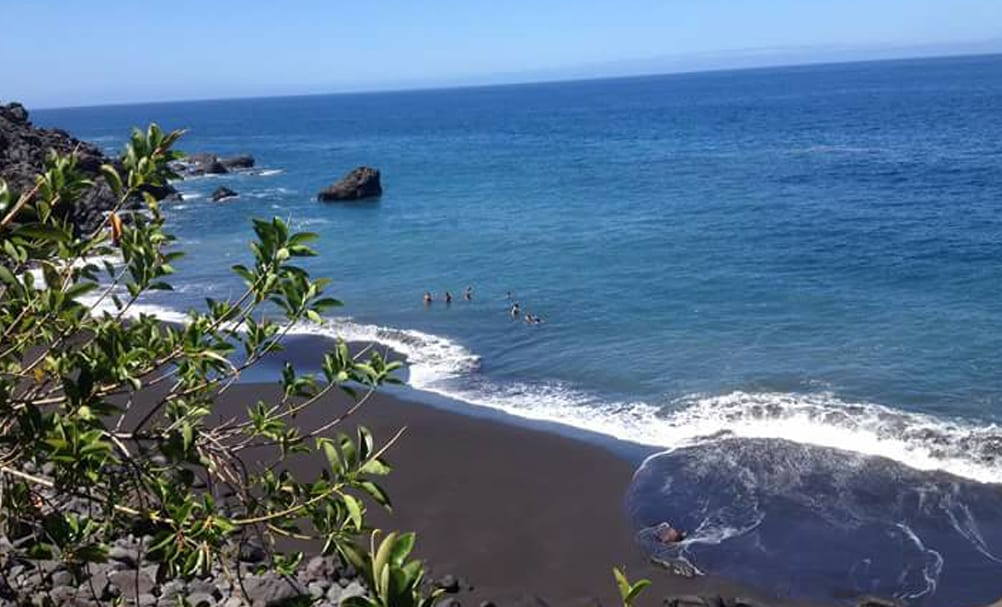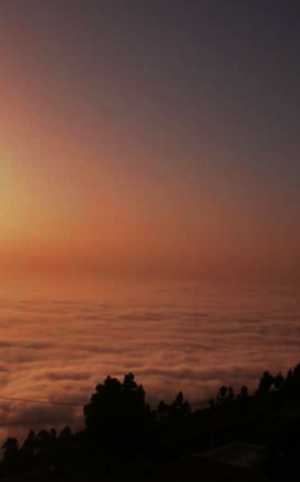La Palma, whose historical name is San Miguel de La Palma, is an island in the Atlantic Ocean that is part of the Canary Islands archipelago (Spain). Unlike others, its conquest by the Castilians did not occur until 1493.
In 2015 I visited La Palma. The truth is that this trip came up unexpectedly. I just woke up one day wanting to visit it and it had been a long time since I had gone to the beach. So, I bought a ticket and went! During my trip, I noticed several things.
An authentic nature bath

The first of them was that to travel La Palma is to take an authentic nature bath since the 706 square kilometers of the island are declared as a Biosphere Reserve.
And there I started to investigate. The first thing I wanted to know was why it had been granted the “reserve” status. The reason is because of its wide variety of landscapes: volcanoes, pine forests, summits covered with laurisilva, impressive cliffs or small coves of black sand.
I soon discovered that a good alternative to enjoy the island is to walk around it. The pure and well preserved nature of this small island is amazing, it has 14 municipalities. I didn’t get around to seeing all of them but I will do this on my next trip.
The amount of contrasts the island has was a great discovery. There are differences in every corner: forest, sea, beach and volcanoes. It is known as “the Beautiful Island”. It is wet and green, full of young volcanoes.
Volcanic origin
I want to clarify that La Palma, like the rest of the Canary Islands, is an island of volcanic origin. What’s more, it emerged from an underwater volcano located 4,000 meters below sea level. It also has a wooded mountain range, a bright green that marks the axis of the island.

The island is divided into two climatic zones that are very well differentiated by a chain of volcanoes called Cumbre Vieja. In the southern zone, some volcanoes are still active. The last eruption took place in 1971 in the municipality of Fuencaliente. The northern zone is dominated by the Caldera de Taburiente, it is a submarine caldera created by eruptions and erosion. This caldera is the largest crater ever emerged in the world.
While visiting different municipalities on the island, I met wonderful people. This gave me the opportunity to ask some questions.
Imelda U: What is the best kept secret on the island?
Hari Moreno Leon: As a secret, I would talk about some beaches that many people do not know. For example, the beach las veta and prois de candelaria.
Isabel M: Well, I really believe that the islanders are the best secret. People come to see tha amazing landscapes but fall in love with the place for people, I think.
Imelda U: The best thing of the island?
Hari Moreno Leon: The best of the island are its many places to go hiking while being surrounded by landscapes that mix the green of nature with the volcanic!
Isabel M: The best of the island are the natural pools of Charco Azul. I love them.
Things to do
The municipalities had the opportunity to see where: San Andrés and Sacuces, Barlovento, Santa Cruz de la Palma, Garafía and Puntallana.
So, going into details about some of the cities and activities to see, I’ll start with the capital. Santa Cruz de la Palma is a small but charming city that has been declared a Historic Site.

This status (historic site) gathers all the goods declared as historical or artistic monuments in a certain place. It is exclusive of the Spanish government and the idea is to protect Spanish cultural assets.
Santa Cruz de La Palma has the second largest population of the island. To start, the best thing to do is to walk down Calle Real to Avenida de El Puente. An important point is the Plaza de La Alameda, where the Virgin’s Ship is located. This is a replica of the skulls in which Christopher Columbus arrived in America, and which has been transformed into a Naval Museum.
On the other hand, in the viewpoint of San Bartolo, located in Puntallana, it is possible to have fantastic views of the ravines in the area. In the Cubo de la Galga you can enjoy a pleasant walk through the laurisilva forest (subtropical forest present in some of the Canary Islands), characteristic of the island.
In San Andrés y Sauces, the Bosque de los Tilos and the natural pools of Charco Azul are a must.
The highest point of the island is the Roque de Los Muchachos (2,426m), one of the places of greatest interest to tourists. There is one of the most complete sets of telescopes in the world -The Roque de los Muchachos Observatory-, but also a fantastic panoramic view of the National Park of La Caldera de Taburiente.
Continuing with my list of things that made an impression on me me during my visit to La Palma, I can say that security, although the island is beautiful, the best thing about it is its people. It is said about its inhabitants, “the palmeros”, who never have an affair and who are kind people. The palmers take their lives without stress, without haste but without pause.
As I learned, while you are visiting the island, there are certain activities that are essential.
1. A walk.

2. Watching the stars. It is possible to see them thanks to the fact that the island is protected by the law of heaven (dedicated to protecting it from light pollution).
The Roque de los Muchachos Observatory (ORM) has some of the most important telescopes in the world. Among them stands out the Gran Telescopio de Canarias, or Grantecan, the largest optical telescope of today.
3. Night walk in the historic center of the capital.
4. Go to the beach.
Since 2006, Palma has been the first place in the world to be declared “Sustainable Tourism Destination”.
I realized that it is an ideal destination for hikers, or for all the people who like to walk among nature. There are more than 1000 kilometers of marked trails. There are routes for all tastes and there are even accessible trails for people with reduced mobility.
Barlovento, is one of the municipalities that I managed to visit. It is located to the northeast.
Before the conquistadors arrived on the island, it was called Tagaragre. The cattle activity gave rise to the work of the land and the agricultural exploitation increased. So much so, that the crops of sugar cane, vineyard and cereal just sort of happened.
But, everything I learned during my trip was not only about information relevant to volcanoes. I also learned that from the sixteenth century, people in La Palma had the possibility of a new economic income since there was a trade between America and Europe.
The first product that impacted was the sugar cane and this was replaced by Canarian wines. What happened exactly was that fsugar cane was also produced in Latin America and tgis meant that it wasnt profitable to import it.
I want to emphasise that these wines come from volcanic lands and are called Malvasía wines. In the past it was a well-known product, whose most important buyer was England. But in the 19th century, consumers changed their taste and the momentum of this product diminished. However, even today, Malvasia wine is still cultivated and produced.
The magnificent viewpoint of La Tosca has wide views over the northern region of the island. On the old road between Barlovento and Garafía is the source of Las Mimbreras. The water is pure and flows without stopping. Laurels, viñátigos, white sticks and wicker grows and the ground is covered by moss.

The Villa de Garafía is a great corner. Its topography is marked by trade winds. The old mills are part of the Gandolfo landscape.
The economic activity of the Municipality focuses on agriculture and livestock. But undoubtedly, rural tourism is the most innovative bet.
Something that fascinated me is that in the Villa de Garafía I found a legend of love. Legend that saw its beginnings and its maturation because of the nature that is accentuated in the peaks.
As they say, here a couple of lovers met in the light of the stars; she was a beautiful Indian from Garafía and he was from Barlovento. he love they felt awakened the demon, who created the wall in a single night with the intention of separating the lovers.
The brave man fought and fell towards the abysses of La Caldera de Taburiente. Then, the devil wanted to stay with the young woman, but she threw herself into the void to meet her beloved.
The Forest of Los Tilos (San Andrés y Sauces) was, for me, the perfect way to close this contact with nature with a flourish. This laurel forest has a Visitor Center and a recreational area.
Totally worth it

There are many reasons why it is worth thinking that La Palma can be an excellent destination because it is beautiful, quiet and safe. In addition, here it is possible to enjoy mild temperatures in summer and in winter.
It does not matter if it’s December, March, or October. The fact is that if you are looking for good weather and even take a dip in the sea, Las Palmas de Gran Canaria can be a good option. Whether you want to escape from the cold winter, or enjoy the warm summer without the heat overwhelming you.
As expected, marine life is abundant. There are five different species of sea turtles, the most common being the loggerhead turtle that is in danger of extinction.
In conclusion, the archipelago has much more than nature to offer its visitors. More than 12 million people visit it every year. A place with national parks, local food, nightlife, starry skies, legends and carnivals, among others.


